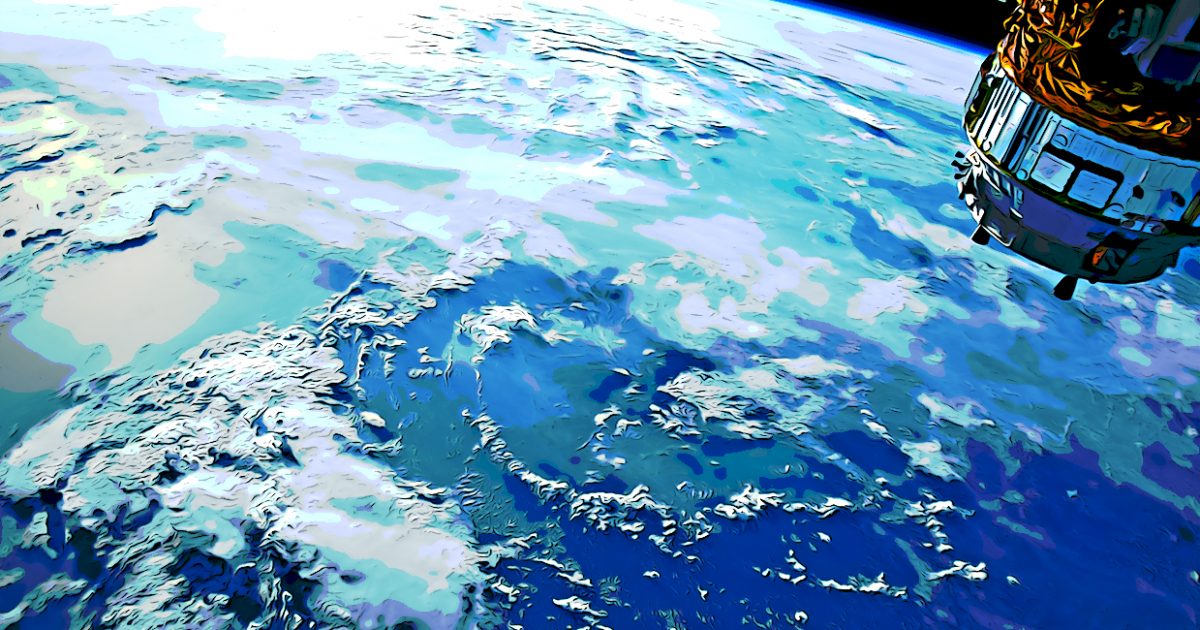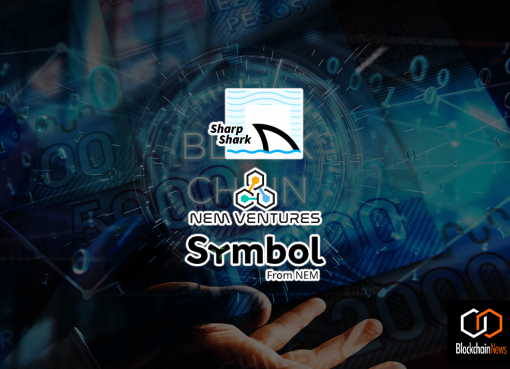Lau: It’s great to discuss this intergalactic opportunity, and just to be planted on Earth, we have to let the audience know your accomplishments and your significance in this space. You’ve contributed to some of the largest OSS projects (operations support systems) in the world, that essentially organize our bits and bytes, like Linux, and you’ve also worked on Bitcoin itself in terms of the infrastructure. Now, walk us through what your goals are with SpaceChain.
Garzik: Absolutely. So taking my experience with Linux and open source, it was clear that open systems led to greater individual freedom and that’s really what inspires me here on Earth to do what I do every day and to take that to the next level. Elon Musk, everyone is familiar with him at SpaceX, very radical, controversial, inspiring; a lot of adjectives can be applied to him, but I respect his thinking as an engineer. He often makes the point about how humanity needs a backup plan.
It’s not just about how space is inspirational — which it is. Space inspires developers like myself, students, entrepreneurs everywhere. But it’s also with climate change, with many of the issues that we have, as an engineer, you often hear your I.T. staff saying, ‘back up, back up, back up your files, back up your work.’ We need to back up our species, and part of that is becoming a multi-planet species. Elon is obviously working on the rockets and getting to Mars and kind of the big label things, but as we had the nickname in the Linux world, ‘Network Plumbers.’
That’s the tack that I take to space: we need to wire the solar system for networking. We need to be able to send an email to space stations which are being lofted [to space] more and more every year. We have the International Space Station, and more [missions] are going to be launched next year. We have lunar missions this year and next year. All of this needs basic communications. And as we look forward to some of the Blue Origins and SpaceXs and Chinas and United States of the world, landing on the moon, landing on Mars, there’s also quietly, or maybe not so quietly, a layer of space startups like SpaceChain, like Alba Orbital, like Loft Orbital, like Astra Robotics, that are hitching rides on these rockets.
We’re taking little tiny satellites, nanosatellites, along for the ride — metaphorical iPhones in space. And this technology really forms the vision around SpaceChain. We have the networking components, we have the spacecraft, and blockchain completed that final picture by adding cryptographic security and an economic layer to what was otherwise just spacecraft pinging each other doing exciting science missions. We added a layer of economic transmission along with that technical transmission so you can pay someone on the moon to mine some moon rock from here on Earth, as an example of using that network when complete.
Lau: And you know, all the implications for the terrestrial transactions that we depend on to serve our lives, to serve our economies, to serve our societies… what would the advantage be? What are the problems here on Earth that you’re solving for?
Garzik: Well, climate change is obviously a big inspiration, and there’s the species’ survivability factor, but there’s a lot of Earth observation that satellites undergo that we can help observe, for example, the deforestation in the Amazon. We can observe ocean temperatures and how they change over time. And this can be done very cheaply in these small nanosatellites for very low cost, for a cost that is accessible to a startup like ours.
Ten years ago, the economics were such that you had to be a U.S., a Russia, or a China to launch a rocket, to launch a satellite. It took billions of dollars, years of man effort, battalions of scientists and engineers. But how much has changed in as little as 10 years, that we, for hundreds of thousands of dollars, launch things to space. I just saw an announcement, as we’re recording this, 24 hours ago, that you can, for as little as US$15,000, send a satellite to space. Another startup just announced that.
Those economics are literally changing the world. Think about how from 10 years ago, only a few government scientists could access space, to today. Every student, every developer is going to have the ability to execute operations in space thanks to SpaceChain and other startups like us.
Lau: Jeff, we recently talked to Chris Hadfield, who’s the former commander of ISS. He’s now got this new venture looking to mine the incredible resources in our final frontier, space. How does that change the conventions of the day to day here on Earth for fintech, for business applications? What are the implications as we expand our interests into space? How does this all tie together with blockchain?
Garzik: Well, how it all ties together in general is that we’ve seen over the decades that space is one of the most advanced technological frontiers. So as we invest in space, which might seem very distant, very far away, those technologies are proven in one of the harshest environments in our universe. And as those technologies are proven, they come back to Earth and literally everything from computers to pencils to shoe strings to nylon and polyester, all of that benefited from space exploration.
Blockchain is no different in that we feel that as it applies to space, one of the components that we looked at, the industry we saw was missing, again, there’s this big model of billion dollar satellites, very large operators, and as a result, there was very little competition. With these new space economics, we can now compete with those much larger providers, which is amazing. It’s upending the entire low Earth orbit economic model. But there was still a limitation that each satellite was owned by a single person. It was a single jurisdiction. It had a single task; it would point its camera in one direction and do the thing.
What blockchain enables is something that everybody’s smartphone has, which is security sandboxes. Everybody’s mobile applications — your WhatsApp, your Instagram, etc. — they’re firewalled away from each other, so that WhatsApp cannot steal data from Telegram on your phone. And that’s very conscious. It sets up those security parameters, so security fences. Satellites didn’t have that. And blockchain brings that to satellites.
So with blockchain and our model spacecraft move from single owner to multi-owner, from single tenant to multi-tenant, from single application to multi-application, that unlocks so many more economic possibilities, startup possibilities, and so that general model, not just SpaceChain, but what other space startups are doing as well, is leading to kind of a new space race, where startups, entrepreneurs see the opportunity, they also see that now it’s accessible to someone who’s not a millionaire, and who just has a great idea and they can start a business and succeed. So these new economic models, combined with this new technology, is what blockchain brings. So it’s not just economics, not just the tech, it’s the fusion of both is what makes blockchain interesting.
Lau: It’s fascinating. The space race that you’re describing today is economized and it’s no longer the stuff of nations; it really is the stuff of peer-to-peer, which essentially is what blockchain enables. Now, this past August, SpaceChain announced the completion of the first multi-signature blockchain transaction in space at 0.0099 bitcoin — we calculated at the time it was about US$92 — to bitcoin addresses via blockchain hardware that was installed, by the way, on the ISS in 2019. What did you learn from this transaction, and what are the challenges that you identified that still remain to be tackled?
Garzik: Well, it’s mainly everything around the transaction. To a Bitcoin developer, the transaction itself was pretty routine, but we had to go through layers of government approvals, company approvals, the way satellites are launched to the ISS, you have to prepare months in advance. So your module is packed into a package, which is packed on a rocket, which sits on a launchpad for months and months. And then it goes up to the ISS, and that’s a real white knuckle moment. Is it going to pass the launch itself? Will it blow up? That’s probably the biggest risk point of any mission.
Once it makes it past max q, the maximum aerodynamic pressure, you’re pretty certain that the launch is going to be a success, and then you have to work with multiple partners: NASA, Nanorack, SpaceX and dozens of other vendors along the way. You’ve got to make sure your licensors are in order. You’ve got to make sure that all of these parties are convinced that your launch package is safe.
As I like to joke, rockets are essentially ICBMs — intercontinental ballistic missiles. And so each time a rocket goes up, you have to convince the U.S., Russia and China that you’re not launching a missile at them. So there’s layers of paperwork that go to launching modules, satellites, etc. And those were the challenges, where blockchain is new and trendy and exciting, but to people who worry about rockets being launched, it’s maybe risky and warranting caution. So meeting the conservative rocket people with the dynamic entrepreneurs of space, that was the key challenge.
Lau: Well, I’m learning a lot about space diplomacy and politics. That’s fascinating to learn, and truly, you know, sometimes bureaucracy is one of the biggest obstacles, but you blew right past it. Though there are still some people who are skeptical about, why would you want to do blockchain transactions in space? How does this help with securing transactions? Why would it be better than what we already have in place? How would you address that?
Garzik: Sure. The first answer usually goes to security, in that when we’re securing data centers on Earth as an engineer, I look at physical security as well as internet security, computer security, etc. And some of the most important servers in the world are literally windowless boxes, windowless buildings guarded by armed guards. There’s biometric security, multiple layers, to get in. So there are layers of physical security to penetrate.
Now, we have clients, particularly in the blockchain space. We don’t disclose names, but the clients, they need tip-top security, and the least able-to-access in terms of physicality, in terms of being able to reach out and touch that computer… put that computer in space! So the physical security aspect combined with the high financial security makes it very interesting for crypto exchanges, for high-net-worth individuals, and some startup entrepreneurs who are looking to store data very, very securely.
So those are some of the early use cases and customer segments that are interested in this sort of ultra-high-security story. Now, how that translates to the average individual is that high security is proven in these high intensity situations, and then it’s brought back down to Earth and deployed to everybody’s mobile phone five years later as just generally improved security. So we beta test it on the moon, so to speak, and then everyone’s phone benefits in the end.
Lau: There’s no doubt that we have seen just the evolution of innovation as a result of the race to the moon those many decades ago, and we have been a beneficiary as a species, and recipient of a lot of innovation as a result. As you said, there’s so many things in our lives today that resulted from the technology that was designed to get man to the moon. And so now that infrastructure is in place.
You’re part of this next story about space, and it really feels like it is in the hands of private individuals and corporations. The economy has been lowered enough for minds and imaginations to take advantage of this opportunity. So what is that opportunity? What does the future hold? What is the future of blockchain in space and how it impacts all of us here on Earth?
Garzik: Well, one of the goals I think we’re very close to achieving, as I was originally inspired in 2014 to 2015, is a developer API that anyone can access, from university students to startups to big corporations, that causes a satellite or a station on the moon to perform an action. And so we’re very close: you can send some tokens, some space dollars, and you can trigger one of the SpaceChain network satellites to perform some Earth observation — to take some pictures. And so this is a pretty common use of satellites.
Whenever a satellite orbits over a certain location, there are various high-resolution photographs, infrareds, etc. taken, and that can be accomplished by anyone who is hooked into this crypto economic network. So you need some crypto pennies to do this, but assuming you have a crypto wallet, then you can trigger a satellite to perform one of these duties. We’ll be adding more satellites to the network in 2021, which means that students, entrepreneurs, developers will have greater access to more satellites. We’re hopeful that as Elon Musk’s Starlink mega-constellation comes online and some of these other mega-constellations, that we begin to internetwork between those, and that holds promise for, for example, rural areas all over the world being served internet at very low cost.
I had some relatives who lived in the mountains and it took them a long time just to get telephones by stringing a wire, and if the telephone or power goes out, then it’s out for a month, because they’re so rural. Satellites offer the potential to leapfrog all over the problem of having to string a wire to every community, and bringing every community online is just an amazing thing. It brings education, monetary opportunity, jobs, to every corner of the world. So it’s really, really inspiring what space can do here on Earth.
Lau: It is a formidable partner to blockchain. When you talk about peer-to-peer transactions, and then you talk about easy access of every human on the planet to be able to access the system, because even if they are in rural areas, as you said, even if in many places it feels uninhabitable, at least for technology or modern technology, that everyone can participate, that is a partnership for the future; there’s zero doubt in my mind, absolutely.
Garzik: One of the things I’m most excited about recently is SpaceChain invested in one of our vendors, which is a semiconductor company: Core Semiconductor. We engaged them to create an open source GPS chip, which they did. That’s a little piece of hardware that’s maybe a bit esoteric for some of the listeners. Why did we do that? That, to me, was a very big deal because this is one of the first open-source chips that can go straight from a nanosatellite to a mobile phone without needing a satellite dish. Again, for people in rural areas to receive satellite internet, to receive satellite TV, you have to buy an expensive dish and an expensive receiver.
The technology that we just open-sourced, we’re giving it to the world for free. It makes that possible: going straight from satellite to a mobile phone, just like your GPS locator works today. So the promise of removing that expensive middleman and making the internet even cheaper for rural areas is just empowering to us at SpaceChain in our mission. If you don’t need to spend thousands of dollars to get connected to the internet, you only need a smartphone, that changes your entire life, for an entire village, an entire region.
Lau: Wow. What is the potential market cap of blockchain in space? Where do you see this industry going?
Garzik: Well, optimistically, of course, my crypto colleagues would beg me to answer “to the moon.” Where is it going? I think that it has strong potential to be the economic backbone for commerce and space, as space becomes more and more developed. Again it’s no longer the era of big government in space. There are many small entrepreneurs from the U.S., China, Europe, all over the world, that are building space businesses. And what is a business? It’s an economic engine.
As we move out into the solar system, into space, those economic interconnections, assuming they’re robust, will mean that these businesses thrive. And with blockchain being a secure economic layer, there’s just a natural fit with space business. It forms not just a payments layer — that’s kind of an overly simplified view – but a reduced trust environment, where you don’t have to trust that someone else has a certain amount of money. There’s a cryptographic proof that that money is there. It’s kind of like a better-than-escrow escrow. And when you’re dealing with volatile space operations where literally your assets might blow up, you need escrow and insurance and these other financial products that blockchain can enable.
Lau: And it’s speeding up innovation like we’ve never seen before. Jeff, thanks for speeding up our knowledge about this new emerging industry a little bit better. It was great to have you on the show. And as this conversation reminds me, we are only limited by our imaginations.
Garzik: Absolutely. And I hope we inspire the imaginations of every student out there.
Lau: Thank you so much, Jeff. That was Jeff Garzik of SpaceChain. Thank you so much for joining us on this latest episode of Word on the Block, Jeff. And to you, our audience, we will see you here next time.
Garzik: Thank you.




